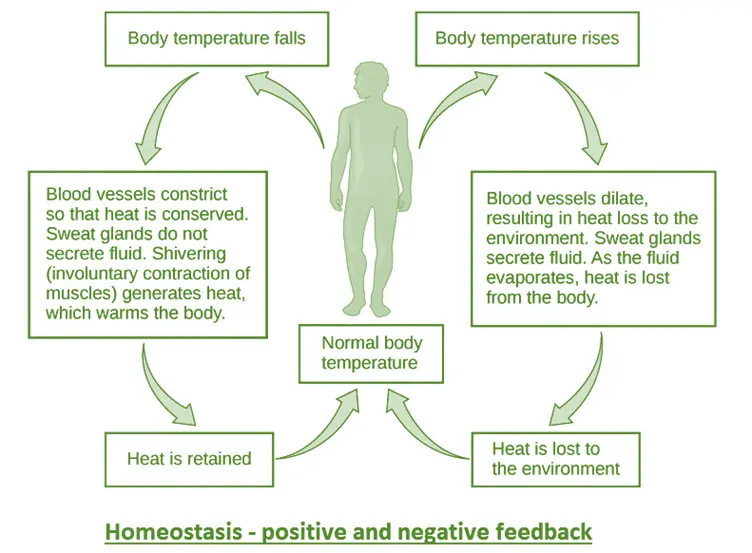Homeostasis is the process by which living organisms maintain a stable internal environment despite fluctuations in external conditions.
The term "homeostasis" comes from the Greek words "homeo," meaning similar, and "stasis," meaning stable.
It is a fundamental concept in biology and physiology, as the proper functioning and survival of an organism depend on its ability to maintain homeostasis.
Homeostasis involves the regulation of various physiological parameters within specific ranges, such as body temperature, pH, blood sugar levels, and fluid balance.
These parameters are monitored and controlled by complex feedback mechanisms that involve multiple organs and systems.

The feedback mechanisms can be classified into two categories:

1) Negative feedback:
Negative feedback mechanisms work to counteract deviations from the normal range.
When a parameter moves away from its set point, negative feedback mechanisms initiate a response to bring it back to the desired level.
This type of feedback is the most common in the body and helps maintain stability.
For example, when body temperature rises, sweat glands are activated to release sweat, which evaporates and cools the body, bringing the temperature back to the normal range.
2) Positive feedback:
Positive feedback mechanisms amplify a change, driving it further away from the normal range.
While this may seem counterintuitive, positive feedback is essential in certain situations that require a rapid or decisive response, such as blood clotting or childbirth.
For example, during childbirth, the release of oxytocin stimulates uterine contractions, which in turn cause more oxytocin to be released, resulting in increasingly stronger contractions until the baby is born.
Several organ systems play crucial roles in maintaining homeostasis, including:
1) Nervous system:
The nervous system detects changes in the internal and external environment and coordinates the body's response through the transmission of nerve impulses.
2) Endocrine system:
The endocrine system regulates bodily functions through the production and secretion of hormones, which act as chemical messengers targeting specific cells or tissues.
3) Respiratory system:
The respiratory system helps regulate blood pH and maintain proper oxygen and carbon dioxide levels through gas exchange in the lungs.
4) Cardiovascular system:
The cardiovascular system transports nutrients, gases, waste products, and hormones throughout the body, maintaining a stable internal environment.
5) Urinary system:
The urinary system filters waste products from the blood and maintains electrolyte balance and fluid volume by regulating urine production.
